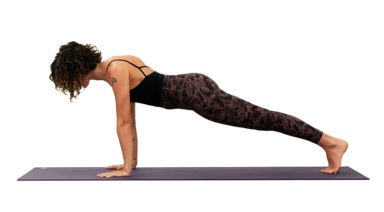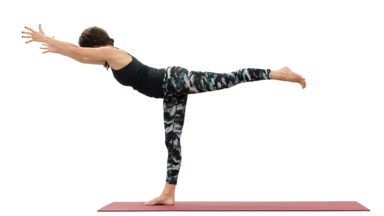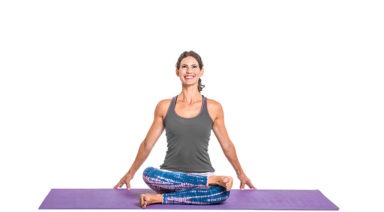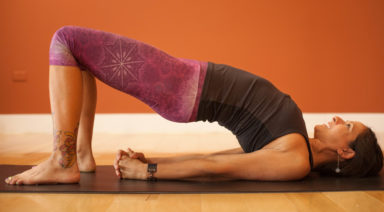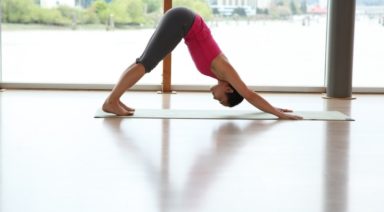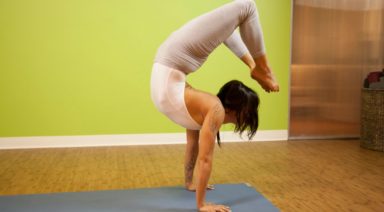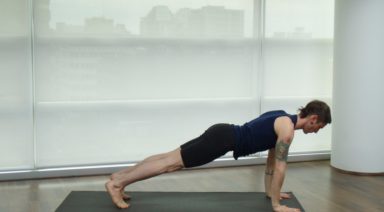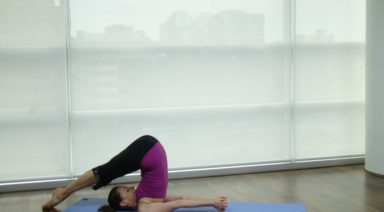Utthan Pristhasana: Lizard Lunge
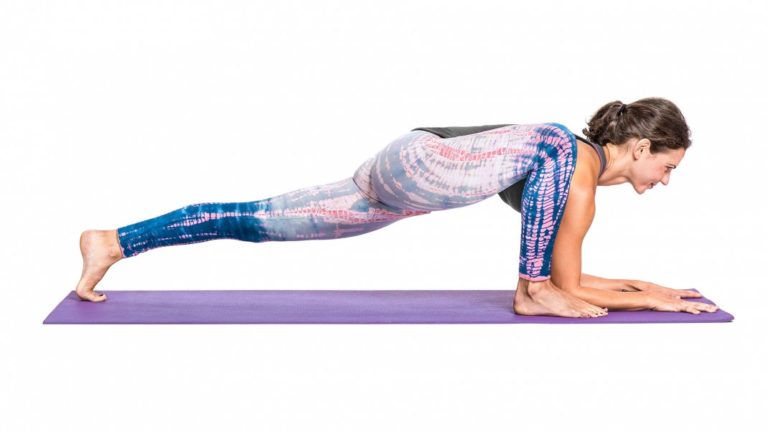
Utthan Pristhasana (OOT-ahn preesth-AHS-ah-nah) is a deep lunge that strengthens the groin and inner hamstrings while preparing the body for deeper hip openers. This shape is also called runner’s lunge in some areas.
Sanskrit:
- Utthan: stretch out
- Pristha: page of the book; back of the body
- Asana: pose
Physical Benefits:
- Opens the hips, hamstrings, groins and hip flexors.
- Strengthens the inner thigh muscles on the front leg.
Preparatory Poses:
- Crescent lunge | Anjenayasana
- Monkey lunge | Anjenayasana
- Happy baby | Ananda balasana
Sequential Poses:
- Half pigeon | Eka pada rajakapotasana
- Half splits | Ardha hanumanasana
- Flying splits | Eka pada Koundinyasana
Counter Poses:
- Head to knee pose | Janu sirsasana
- Bound angle pose | Baddha konasana
- Half lord of the fishes | Ardha matsyendrasana
Adjustments/Modifications:
- Place your hands or forearms on a block.
- Place your back knee on the ground or a blanket for a variation.
Step-By-Step:
- Begin kneeling on your mat in tabletop pose.
- Step your right foot to the top of your mat outside of your right hand.
- Walk your back leg back as far as is comfortable, toes tucked under.
- Option to lift your back knee off the ground.
- Squeeze your feet toward each other to engage the hip and leg muscles.
- Reach your chest forward, keeping your spine long.
- If you have room, lower your forearms to a block or the ground. If the ground seems far away, place your hands on a block or a chair.
- Hold for five breaths, then release to tabletop. Repeat on the other side.
###Legal Disclaimer Before participating in any exercise program or using any fitness products or services that may be described and/or made accessible in or through the Gaia Website and/or the Services, you should consult with a physician or other healthcare provider. Read more about Gaia’s Terms Of Use.
Phalakasana: Plank Pose

ADJUSTMENTS | BENEFITS | SEQUENCING | SANSKRIT | STEPS
Phalakasana (fall-ack-AHS-anna), is an essential posture for a strong yoga practice. Holding plank pose will improve your endurance and muscle tone, help develop the strength needed for more complex poses, and generate heat and stimulating the navel chakra.
Philosophy + Origin
Hidden in the pose’s name is the Sanskrit word “phala,” which means to bear fruit or ripen. In yoga, the idea of tapas, often translated as “heat,” “passion,” or “discipline,” fuels the physical asana practice, encouraging students to seek out the challenge again and again in order to become stronger, to build an internal flame in the body that fuels every aspect of life. When you think of plank pose as an opportunity to “ripen” or “bear fruit,” you become aware of the transformative effect of this seemingly simple (although challenging) pose. Each time you enter the pose, use the breath to ripen the fruit of your labors. The ability to hold this pose with steadiness and grace is known to create major shifts in your practice and your life.


